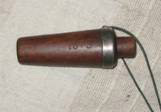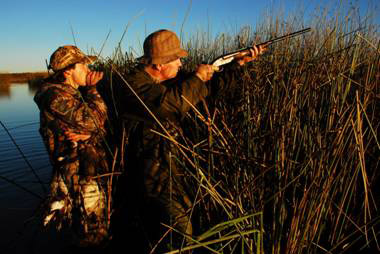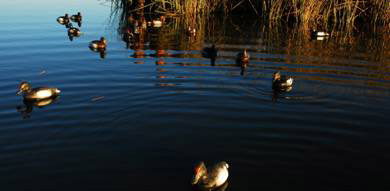
Blinds
There are numerous types of structures that qualify as duck blinds used for hunting. Blinds can be temporary or permanent. They are very effective at concealing hunters and making their movements unnoticed.

For hunting near water, the types of blinds are almost unlimited. A blind may be constructed out of plywood, large logs or branches, burlap fiber or natural vegetation. Many of these permanent blinds look like a small shack with an opening that faces the water and a portion of the sky.
Creating a temporary, natural blind as a method of concealment is a hunter’s best bet. This is done by using logs or tree branches, native grasses, marsh vegetation, natural material or by simply hiding behind a tree or a clump of grass or a shrub. Blinds may have heaters, benches to sit on and tables. There is a small area for the dog also.
At River Plate we select areas with more than one water level. For example, in south Entre Rios, there are unique marsh systems with three different water levels, thus ensuring that at any given time conditions are ideal in one area or another, regardless of ever-changing climate conditions or even phases of the moon.
For each of its duck programs, River Plate feeds from 150 to 200 blinds, EVERY DAY. The feeding program involves a team of 15-20 gamekeepers who feed the ducks in varying amounts according to the number of ducks on any given body of water, and the phase of the moon.
The blinds are easily accessible. There is seldom a need to take a boat or wade through treacherous muck or do any walking at all. Hunters simply step out of the vehicle into the blind. Each blind hosts one or two men on swivel seats over conventional decoys and battery-powered or wind-powered decoys, while the guide uses an electronic caller that is capable of calling all the species available.
Decoys
Decoys are one of the most important pieces of equipment for the waterfowler. Using a good spread of decoys and calling, an experienced hunter can successfully bag ducks or geese if birds are flying that day. The first waterfowl decoys were made from vegetation such as cattails by Native Americans. Modern decoys are typically made from molded plastic that began in the 1960s.

Recently, decoys have been introduced that provide life-like movement that adds to the attraction for waterfowl. For example, shakers are decoys with a small electric motor and an offset weighted wheel. As the wheel turns it causes the decoy to “shake” in the water and create realistic wave rings throughout the decoy spread. Spinning wing decoys are also fitted with an electric motor and have wings made of various materials. As the wings spin a optical illusion is created simulating the wing beats for landing birds.
At River Plate, guests will see a continuous stream of low-flying decoying ducks of many species — including the prized rosy-billed pochards — charging into the decoys at a shell consumption rate of one box every 15-20 minutes! If you have never experienced this shooting, maybe you haven’t really experienced duck hunting.
The waterfowl hunting experience does not end when departing the blind. Guests will savor duck a l’orange and duck stroganoff and other gourmet duck specialties prepared by River Plate’s master chefs.
